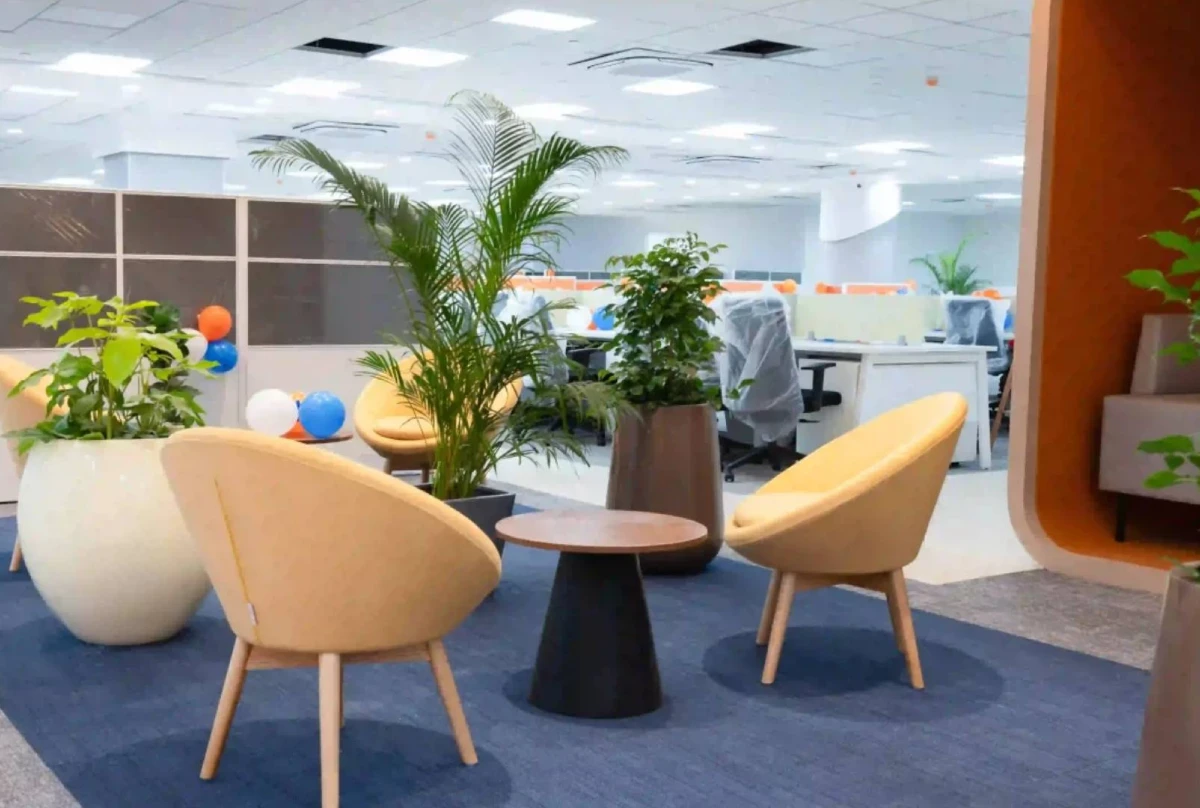
In the realm of interior design, appropriate lightning is the soul of interior design. With the progress of modern office design and the improvement of human aesthetic consciousness, colors, and lighting are used to define brand identity and influence organizational behavior. Colors and lights are powerful tools to evoke emotions, affect people’s minds, and decide workflow.
For the perfect visual effects, Lightning design needs a harmonious combination and execution of color contrasts, hues, and shades. As per research, a beautiful atmosphere can enhance the brain’s efficiency by 10-40 %.
So, at workplaces where employee efficiency is directly proportional to business performance, the importance of interior ceiling lighting design is non-negotiable.
In this blog, we will explore how lightning can influence the work culture and thus help you to create an aesthetically pleasing and productivity-boosting work environment with the help of sharp blends of artificial and natural lighting.
Interior lighting design can transform a space’s ambiance, functionality, and overall aesthetic. Lightning is an essential element in creating the mood and work atmosphere. For instance, different color temperatures can evoke distinct moods.
Warm white light creates a welcoming atmosphere, while cool white light can energize a space. Dimming controls allow you to adjust light intensity to suit various activities and moods.
Mainly, there are two types of lightning used in office interiors: natural lighting and artificial lighting. Both of these lights have different functionalities and effects on the workspace atmosphere.
Let’s look at both of these lightning design types one by one:
Natural Lighting Design:
Natural lighting refers to daylight entering an office through windows, skylights, or other openings. It is a highly valued aspect of office design because it enhances mood, increases productivity, and reduces eye strain.
The deliberate incorporation of natural light into office interior design is a strategic move that empowers you to prioritize well-being and productivity. Natural light brings vibrancy to the professional environment and reduces energy costs.
Unique strategies like eliminating solid walls and using glass partitions to pass light freely between spaces are at your disposal.
Skylights or light tubes can bring daylight into areas without windows, creating a harmonious work atmosphere. Reflective surfaces like light-colored floors and mirrors help amplify natural light and reduce electricity use.
Biophilic designs and integrating greenery with daylight inspire a sense of harmony. Placing workstations near windows ensures that employees benefit from natural light, and using adjustable blinds or smart glass to control glare maintains this inspiring atmosphere.
Exposure to natural light can regulate physical, mental, and emotional energy levels, significantly improving employee well-being. Offices with ample natural light often use large windows, light-reflective surfaces, and open layouts to maximize daylight distribution. However, the effectiveness of natural light can be influenced by factors like building orientation, external obstructions, and the time of year.
Designers must carefully plan window placement and use shading devices to manage glare and heat gain while maintaining optimal daylight levels, showing a commitment to employee care and value.
Artificial Lighting Design :
Artificial lighting, conversely, encompasses all forms of artificial illumination, including incandescent, fluorescent, LED office lighting, and halogen lights. Extending usability beyond daylight hours and providing consistent lighting conditions is essential.
Artificial lighting has different use cases; for example, it can be used for various needs and activities within a space. For instance, task lighting for work areas, ambient lighting for overall illumination, and accent lighting to highlight architectural features or artwork.
The versatility of artificial lighting helps designers create different moods and work atmospheres with LED office lighting. From cozy to bright and energetic, everything can be made with it.
Modern technological advances also help to offer energy-efficient options and intelligent lighting systems. These systems allow you to control it via apps or sensors to adapt to changing conditions and preferences.
In Conclusion:
In conclusion, interior lighting design is pivotal in creating an office’s atmosphere. It influences employees’ productivity and well-being: natural and artificial lighting play crucial roles, each with unique benefits.
By thoughtfully implementing these lighting types, interior designers can enhance mood, efficiency, and overall work environment.
Embracing a harmonious blend of light can drive aesthetic appeal and operational success, making lighting an indispensable element of interior design.
